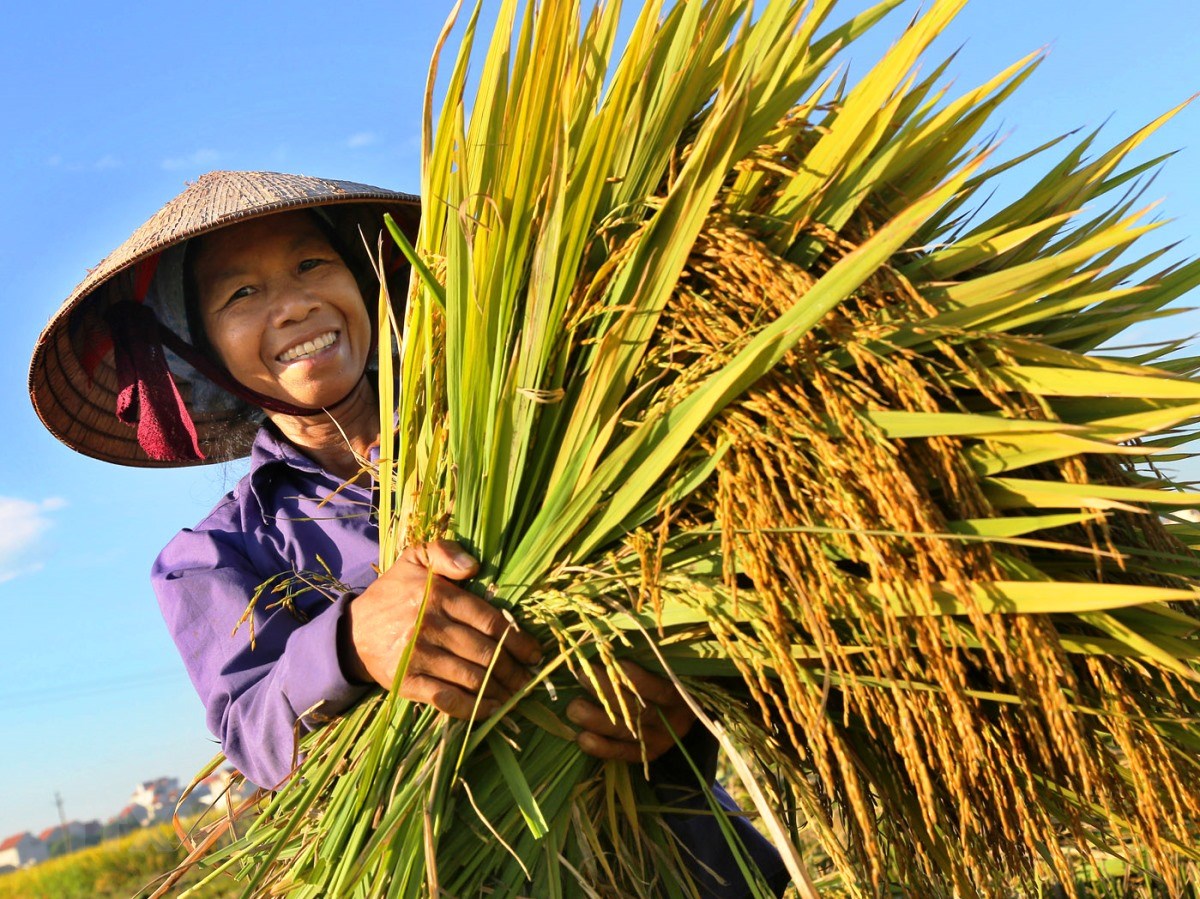
Vietnam Tour 2025-2026: Where to go? Which itinerary? What to do? How many days?
- on Oct 26, 2023 By: Ngoc Tu DINH
Vietnam is a fascinating destination, featuring breathtaking scenery, a rich history, and a vibrant culture. For travelers, exploring this country through a well-organized tour can turn a simple holiday into an unforgettable adventure. However, with countless options, selecting the best itinerary for a Vietnam Tour can be confusing.
Worry not! Here's a detailed guide to answer your questions: “What to see and do in Vietnam”, “How many days?” and to help you design your own Vietnam tour that suits all lengths of stay and all your preferences.
Northern Vietnam
A trip to northern Vietnam allows deep cultural and historical immersion, ideal for paving the way for your exploration of the country’s other captivating regions. In Hanoi, discover the Old Quarter with its centuries-old houses, as well as cultural and historical monuments that pay tribute to the country’s leaders. Don’t miss Ha Long and Ninh Binh for their breathtaking landscapes. Mai Chau, Pu Luong, the northeast and northwest regions are also to be added to your must-see list.
Hanoi: ideal for relaxing
(Recommended duration: 2 – 3 days)
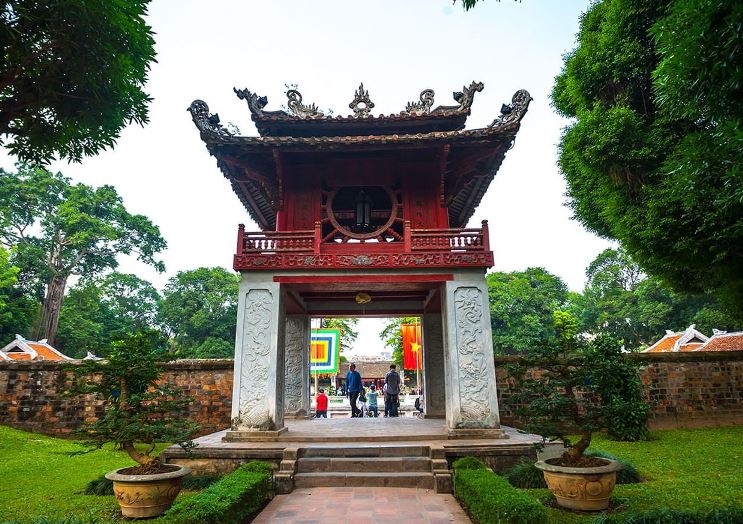
Founded in 1010 by King Ly Thai To, Hanoi has played its role as the economic, political, and cultural cradle of Vietnam throughout the feudal dynasties. Every year, the capital of Vietnam attracts millions of domestic and international tourists by dint of its enigmatic charms. The fusion between a millennial city and the modern pace of life is perhaps the reason for its enchantment. From ancient temples and historical relics to a modern metropolis, Hanoi has it all to satisfy any type of traveler.
Option 1: Explore Hanoi in one day
If you only have a day to explore the capital, here are a few must-see destinations:
- Hanoi Old Quarter, with its 36 streets specializing in handicrafts: silk, nacre, conical hats, bronze items,...
- The Temple of Literature (Van Mieu Quoc Tu Giam), Vietnam’s first university, founded in 1070.
- The symbolic Hoan Kiem Lake and Ngoc Son Temple.
- The complex of Ho Chi Minh Mausoleum, Ba Dinh Square, Presidential Palace, and Ho Chi Minh stilt house.
- The One Pillar Pagoda.
- Tran Quoc Temple, the first temple of Hanoi, dates from the 6th century.
- Quan Thanh Temple, dedicated to Saint Tran Vu, protector of the citadel of Thang Long (Ancient Hanoi).
- Vietnam Museum of Ethnology, or Vietnamese Women's Museum.
You can also opt for the following activities:
- Get around Hanoi Old Quarter and French Quarter with a cyclo ride (pedal taxi).
- Cooking Class
- Embark on a food tour in the Hanoi Old Quarter, renowned as one of the world’s finest gastronomic capitals.
Option 2: Discover Hanoi’s pagodas
If you have more than a day in Hanoi, it is highly recommended that you spend some time visiting the pagodas in the surrounding area. These sites of Buddhist worship are not only havens of peace and spirituality but also offer a fascinating window into Vietnamese history, architecture, and culture. Here are just a few of the pagodas to discover:
Thay Pagoda
Located around 30 kilometers west of Hanoi city center, Thay Pagoda nestles at the foot of Sai Son or Thay Mountain. Dating back to the 11th century, this pagoda worships the bonze Tu Dao Hanh, the founder of water puppetry. Thay Pagoda is famous for its picturesque architecture, which blends harmoniously with its natural setting of ponds and peaceful gardens.
Tay Phuong Pagoda
Situated about 35 kilometers west of Hanoi, Tay Phuong is a Buddhist Pagoda renowned for its beautifully carved wooden sculptures and statues representing Buddhist deities. The pagoda, built in the 8th century, is perched atop a hill offering panoramic views of the surrounding countryside.
Nom Pagoda
Nom Pagoda is a historic Buddhist temple located in the Nom Village, Hung Yen Province. This pagoda, whose origins date back several centuries, is renowned for its ancient architecture and impressive wooden carvings. The pagoda is an important center of local culture and spirituality, attracting both Buddhist devotees and visitors keen to discover Vietnam's religious heritage. Visiting the Nom Pagoda allows you to immerse yourself in Vietnam's spiritual history while appreciating the beauty of traditional art and architecture.
Practical advice for pagodas visits
Appropriate attire: Be sure to wear clothing that covers the shoulders and knees. Pagodas are sacred places of worship, and it is always important to respect a religion and local customs.
Behavior: Be respectful and avoid making too much noise. Always ask for permission before taking photos, especially inside any sanctuaries.
Offerings: If you wish to make an offering, incense sticks and flowers are appropriate choices.
Option 3: Explore traditional craft villages
For those wishing to discover Hanoi in greater depth, use your third day in this city to head to traditional craft villages, such as Bat Trang Pottery Village, Ha Thai Lacquer Village, Chuong Conical Hat Village, and others. These villages represent treasures of Vietnamese craftsmanship, where centuries-old skills are perpetuated from generation to generation.
Bat Trang Pottery Village
Only 13 kilometers from Hanoi city center, Bat Trang is renowned for its pottery and ceramics. Visit workshops where artisans handcraft unique creations, bowls, vases, and sculptures. You can also soak up the atmosphere at the local market, where you can buy authentic souvenirs and observe traditional pottery-making techniques.
Ha Thai Lacquer Village
The Ha Thai craft village, located in Duyen Thai Commune, Thuong Tin District, around 30 kilometers south of Hanoi, is renowned for lacquerware. This village boasts a rich heritage in the art of lacquer production, with a lineage of skilled artisans spanning multiple generations. Renowned for their meticulous craftsmanship and traditional methods, these artisans undertake a labor-intensive process that spans months to create each exquisite piece.
Chuong Conical Hat Village
Chuong village, located in Phuong Trung Commune, Thanh Oai District, about 30 kilometers southwest of Hanoi, is famous for traditional Vietnamese conical hats, widely known as ‘nón lá’. The village itself is an important center of traditional Vietnamese craftsmanship, with a rich history and a community dedicated to preserving this unique craft. Making nón lá is a meticulous process that involves selecting palm leaves, drying them, sewing the leaves onto bamboo frames, and finally adding decorations and motifs. Visiting Chuong offers an authentic insightinto Vietnamese culture, allowing you to appreciate the dedication and talent of the craftspeople.
>> Read more: Visit Hanoi in 1, 2 or 3 days - what to see and do?
Halong Bay:An immersive exploration
(Recommended duration: 1 – 3 days)
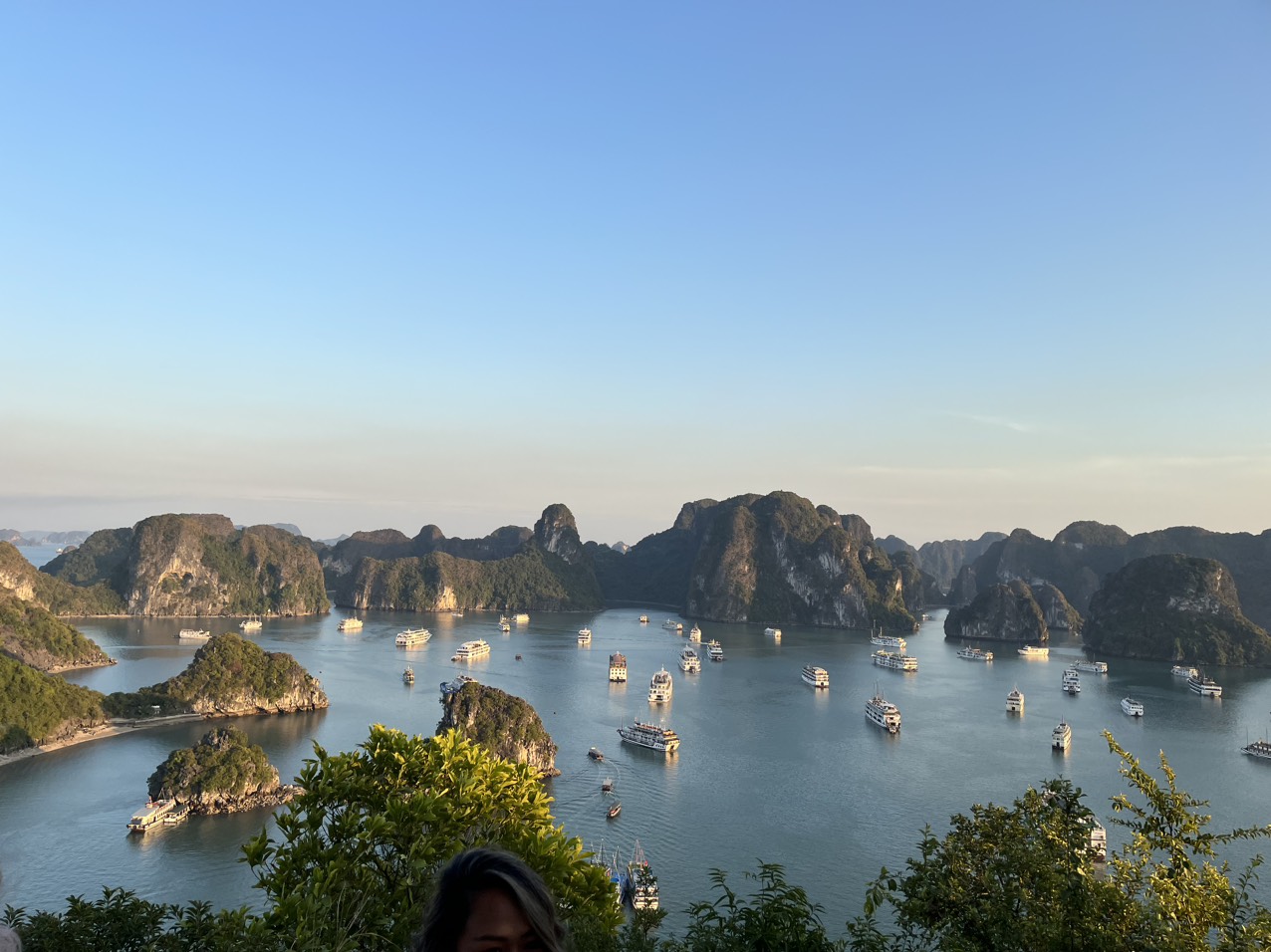
Renowned for its extraordinary beauty, Halong Bay stands undoubtedly as the preeminent destination in Vietnam. According to esteemed experts, a trip to Halong Bay is an imperative experience to be undertaken at least once in a lifetime.
Embarking on a Halong Baycruise is undoubtedly the most exquisite way to immerse oneself in the beauty of this UNESCO World Heritage Site. Delve into its splendor and charm with one of the three distinct cruise options available, each offering a unique experience. Understanding the nuances of these choices is essential in ensuring a truly unforgettable exploration of this magnificent destination. Here they are :
Option 1: One-day cruise
For those with limited time, a day trip is the perfect choice. This tour includes a 4-5 hour cruise on the bay, with lunch served on board. The return to Hanoi is scheduled for late afternoon, around 4-5 pm, allowing you to discover the wonders of Hạ Long in a compact but memorable way.
Option 2: Two-day one-night cruise (Most chosen)
This cruise is the most popular option for exploring the fascinating wonder of Halong Bay. One night is spent on board, giving visitors more time to explore Ha Long’s spectacular natural caves. There is no experience quite comparable to the pleasure of spending an evening on luxurious junk, tasting fine wine, and savoring delectable seafood.
Option 3: Three-day two-night cruise
Spanning three days and two nights, this cruise offers an opportunity to explore the lesser-known and secluded areas of Halong Bay. This adventure is particularly recommended for individuals who have sufficient time to dedicate themselves to the discovery of these discreet corners. With this option, tourists are also able to take part in fascinating activities: visits to caves and islands, kayaking, swimming, etc. without feeling rushed, while enjoying fresh seafood and local specialties prepared by chefs on board.
It is advised against opting for cruises exceeding a duration of four days due to the inadequacy of junks, characterized by their relatively small size and limited level of comfort to effectively accommodate extended sea voyages.
>> Read more: How to choose your cruise in Halong Bay?
Ninh Binh: An enriching discovery
(Recommended duration: 1 – 3 days)
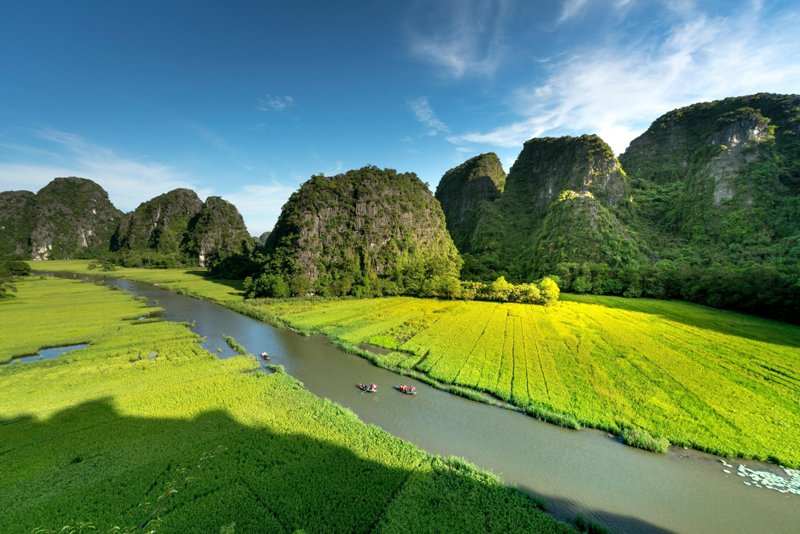
Located 100 kilometers from Hanoi, Ninh Binh, also known as "Halong Bay on land," is renowned for its spectacular natural settings, where picturesque rivers, fertile rice paddies, and majestic limestone mountains meet in beautiful harmony. Ninh Binh is a hidden gem that seduces visitors with its rustic ambiance, ancient temples, and serene rural life. This is a perfect destination for those who seek a peaceful retreat and an authentic northern Vietnamese experience.
What to see and do in Ninh Binh:
Option 1: One-day exploration in Ninh Binh
If one day is all you have to explore Ninh Bình, you can still take part in an immersive and memorable experience at Van Long Nature Reserve. This protected biodiversity sanctuary is famous for its karst mountain landscapes and unique aquatic ecosystems. Opt for a traditional rowing boat excursion to admire the unspoiled natural beauty. According to the locals, it’s advisable to visit Van Long Nature Reserve in the afternoon, around 4 PM, since the chance to see flocks of birds return to their nets and the rare delacour's langur is higher around this time.
You can also take a bike ride to Thung La Temple, a quiet, picturesque area where you can soak up the serenity and beauty of the Red River Delta countryside. This activity is best scheduled in the morning so that you can take advantage of the pleasant weather. After a visit to Thung La Temple, you can ride back to the Van Long Nature Reserve for the rowing boat excursion. This intensive day will allow you to explore the natural and cultural aspects of Ninh Bình, interact with the local people, and better understand their way of life and traditions.
Option 2: Two days in Ninh Binh
For a more immersive experience, extend your stay by two days to visit Hoa Lu, Vietnam's ancient capital in the 10th century, and take a rowing boat excursion to Tam Coc, known as “Ha Long Bay on land”. This two-day extension will allow you to explore not only the nature and culture but also the rich and fascinating history of the region while giving you enough time to appreciate each site without rushing.
Option 3: All-inclusive three-day stay in Ninh Binh
For total immersion and the ultimate in Ninh Binh discovery, opt for a three-day stay that includes other Ninh Binh sites:
- The Cuc Phuong National Park: This is one of Vietnam’s oldest national parks. Here, you can explore the hiking trails, visit the primate conservation center, and discover incredible biodiversity, including rare species of plants and animals.
- The Phat Diem Stone Cathedral: This cathedral stands as a distinctive masterpiece, a harmonious marvel that brilliantly blends modern European and traditional Oriental architectural styles.
By choosing from these options, you can tailor your Ninh Binh experience to suit your interests and length of stay, while ensuring a rewarding and memorable experience in this beautiful Vietnamese destination.
See Ninh Binh wrapped in a video right here:
>> Read more: THE 11 MUST-VISIT Attractions in Ninh Binh
Mai Chau- Pu Luong: An exceptional experience
(Recommended duration: 2 – 4 days)
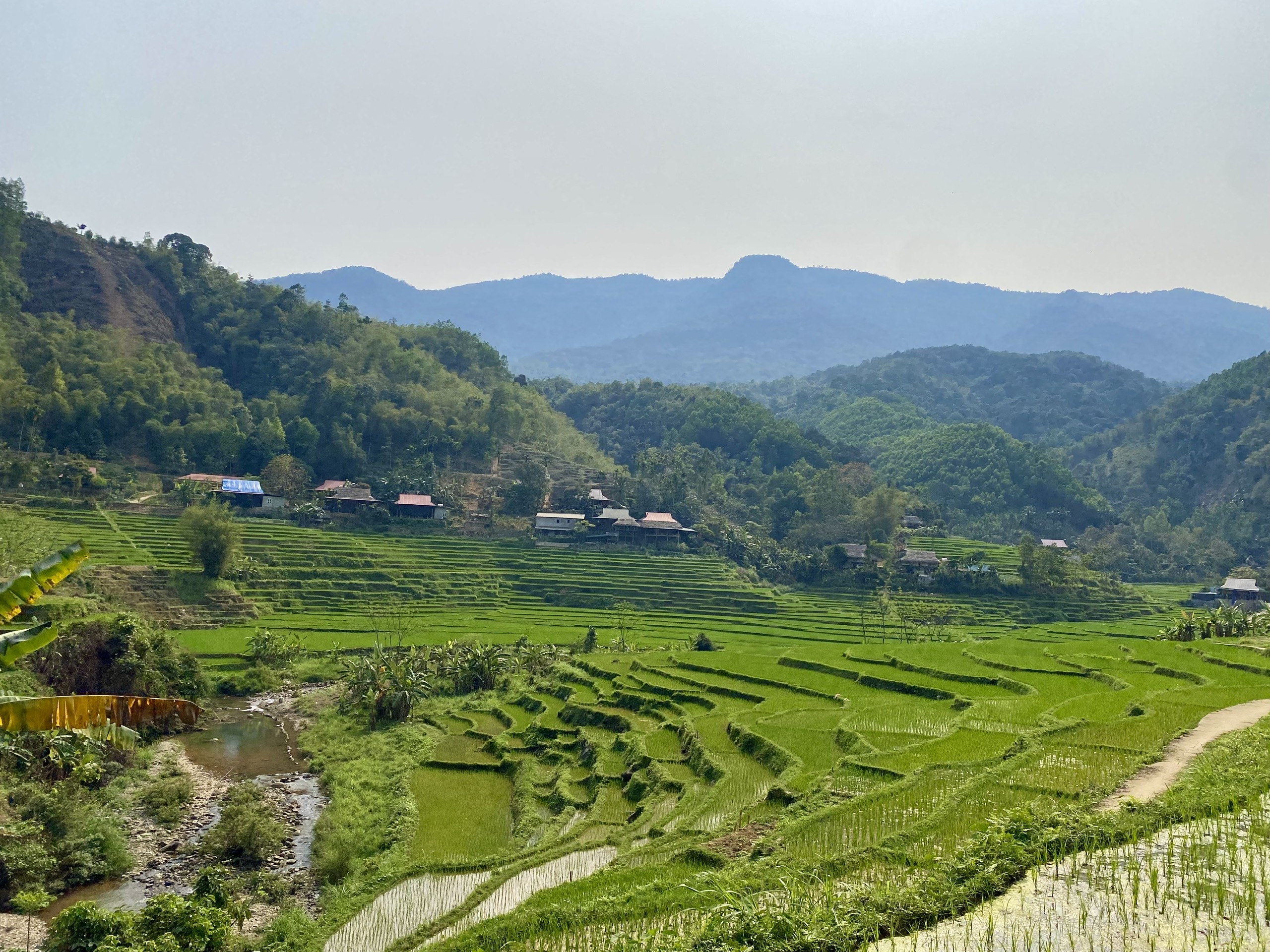
The diversity of ethnic groups and the magnificent landscapes, particularly in the mountainous north, are among the main reasons why travelers choose Vietnam as their destination. However, not all travelers have sufficient time to explore both the North-West and North-East areas, which typically require at least 5-7 days. In such cases, Mai Chau-Pu Luong is undoubtedly the ideal solution to ensure you have a fulfilling trip in Vietnam.
200 kilometers from Hanoi, Mai Chau, and its neighbor Pu Luong invite you on a relaxing excursion through a valley of rice paddies, where you will meet the Thai and Muong ethnic groups living in harmony with nature in their traditional stilt houses. While Sapa and Mu Cang Chai only have one rice terrace season a year, Pu Luong has two, to the delight of nature lovers. For those who don't have much time, Mai Chau-Pu Luong is an ideal choice for an introduction to the cultures of the northern ethnic groups.
What to visit and to do in Mai Chau- Pu Luong:
- Take a bike ride or walk through verdant valleys, vast rice paddies, and villages to discover the way of life of the Thai and Muong communities, which has remained virtually unchanged for centuries,
- Embark on a bamboo raft trip on the river for an immersive experience in the heart of nature.
- Hike through winding paths, rice terraces, and lush forests.
- Spend the night at a local home and sample local specialties.
- Attend a traditional white Thai dance performance, followed by a tasting of fermented rice alcohol, for a total immersion in local culture.
If time permits, extend your stay in the Mai Chau - Pu Luong region by exploring remote villages on foot.
A brief itinerary from Hanoi
Day 1: Hanoi - Mai Chau
Visit to Thai villages. Walk or cycle in the Mai Hich valley - Mai Chau. Overnight at a local's house.
Day 2: Mai Chau - Pu Luong
Hike in the Eo Ken valley - Ban Hang and meet the Muong and Thai people. Overnight at a local's house.
Day 3: Pu Luong - Hanoi
Hike in the Pu Luong valley through mountain villages and terraced rice fields. Then on to Hanoi.
Sapa: Explore the treasures of Northwestern Vietnam
(Recommended duration: 2 – 4 days)
Sapa is a world-renowned destination for its breathtaking rice terraces, among the most beautiful in the world. From Hanoi, you can easily reach Sapa by night train, bus, or private car. To fully appreciate this picturesque region, it is best to devote at least 2 to 4 days to exploring it. May and June are when the rice plantation commences, while August and September mark the ripening of the terraced fields, offering spectacular panoramas.
What to see and to do in Sapa:
- Explore Sapa’s villages
- Hike through the famous Muong Hoa rice terraces. Enjoy spectacular views of the mountains and lush valleys while learning about the traditional farming techniques of the locals.
- Encounter local minorities to discover their ancestral customs and learn more about their way of life. Visit handicraft cooperatives to observe traditional weaving techniques.
- Conquer Mount Fansipan, the roof of Indochina
- Indulge in a traditional massage at the local spa to recharge your batteries after a day of intense discovery.
Extended exploration over several days
If your schedule permits and you wish to explore this region in depth, you can undertake additional treks to other remote ethnic villages. Sapa is a paradise for trekking enthusiasts, as its verdant mountains and misty valleys are home to a multitude of trails to suit all levels. Whether you're a seasoned trekker looking for a challenge or a curious beginner exploring nature for the first time, Sapa has the perfect trail.
Find out some sample itineraries combining these fascinating destinations in North Vietnam:
Option 1: Hanoi - Ninh Binh - Halong ( 5 days)
Day 1: Hanoi - arrived
Day 2: Hanoi - Visit the city
Day 3: Hanoi - Ninh Binh - Van Long
Day 4: Ninh Binh - Ha Long Bay
Day 5: Ha Long Bay - Hanoi
Option 2: Hanoi - Sapa - Halong ( 6 days)
Day 1: Hanoi - arrived
Day 2: Hanoi - Visit the city - Take the night train for Sapa
Day 3: Sapa - Y Linh Ho - Lao Chai - Ta Van
Day 4: Sapa - Can Ho B-Ta Giang Phinh - Take the night train for Hanoi
Day 5: Hanoi - Ha Long Bay
Day 6: Halong - Hanoi
Option 3: Hanoi - Mai Chau - Pu Luong - Ninh Binh - Halong ( 7 days)
Day 1: Hanoi - arrived
Day 2: Hanoi - Visit the city
Day 3: Hanoi - Mai Chau - Mai Hich
Day 4: Mai Hich - Pu Luong
Day 5: Pu Luong - Ninh Binh - Van Long
Day 6: Ninh Binh - Ha Long Bay
Day 7: Ha Long Bay - Hanoi
The Northwest: Land of rice terraces and colorful Mong people
(Recommended duration: 5 – 10 days)
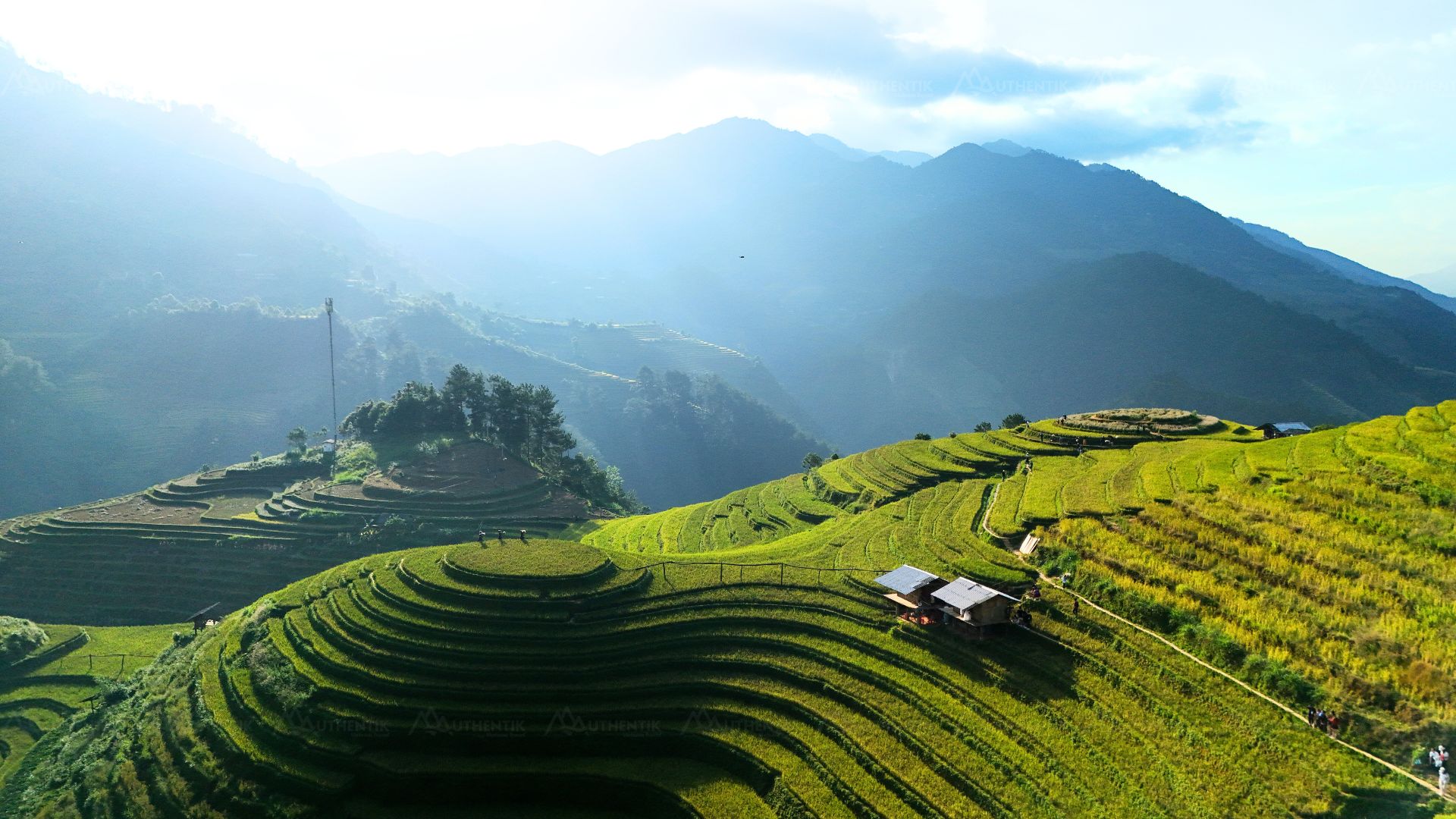
The Northwest refers to a mountainous region in northern Vietnam, including Nghia Lo, Tu Le, Mu Cang Chai, Sapa, Bac Ha, Thac Ba,... For travelers in search of adventure and spectacular scenery, this is a truly iconic route. The iconic mountain passes, enormous rice terraces, and diverse ethnic communities all contribute to the popularity of Vietnam's northwestern mountainous region. Interacting with the natives from various ethnic groups, such as Hmong, Dzao, Giay, and Xa Pho, allows travelers to explore their vibrant traditional costumes.
Recommended itinerary for Northwest Vietnam
Day 1: Hanoi - Nghia Lo
Road to Nghia Lo. Cycle through the Thai valley at Nghia Lo. Overnight in a Thai house on stilts.
Day 2: Nghia Lo - Tu Le - Mu Cang Chai.
Meet the Thai and Dao along the way. Stop for photos and hike in the Tu Le valley and on the photogenic road to admire the famous rice terraces of La Pan Tan - Mam Xoi.
Note: Possibility of adding a one-day hike to Mu Cang Chai to admire the spectacular rice terraces.
Day 3: Mu Cang Chai - Than Uyen - Sapa
Head towards Sapa, crossing the famous Hoang Lien Son pass at an altitude of 2046m, one of the longest passes in Vietnam. Observation of Mount Fansipan, the highest peak in Indochina.
Note: An add-on of 1 to 3 days is possible for those who enjoy trekking.
Day 4: Sapa - Bac Ha
Trek through the villages around Sapa. Meet the Black Hmong, Giay, and Red Dao.
Note: An add-on of a 1-day trek to Bac Ha is possible.
Day 5: Bac Ha - Thac Ba - Hanoi
The Northeast: Home of the world's geoparks
(Recommended duration: 5 – 10 days)
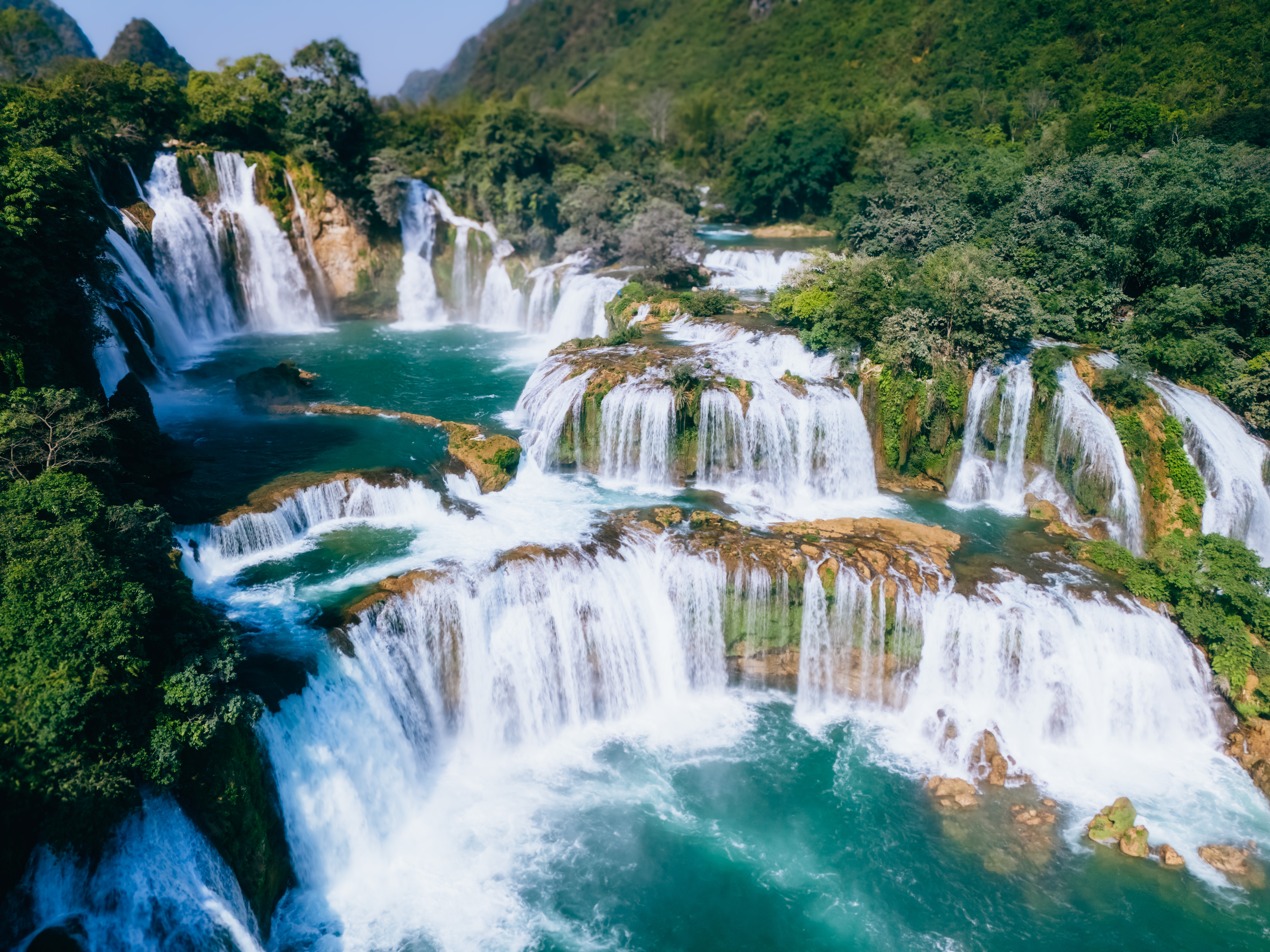
Explore the areas of Ha Giang, Dong Van, Bao Lac, Cao Bang, and Ba Be, where you'll encounter awe-inspiring karst mountains, winding roads, stunning waterfalls like Ban Gioc and Dau Dang, as well as caves adorned with stalactites and stalagmites such as Hua Ma, Nguom Ngao, and Puong. Do not pass up the chance to explore remote and authentic ethnic villages. This region of Vietnam is a must-visit for trekkers and those seeking extraordinary experiences.
Here are some must-visit destinations in Northeast Vietnam:
* Dong Van Karst Plateau Geopark
Classified as a World Heritage Geopark by UNESCO, the Dong Van Geological Park is a must-see destination for lovers of nature, geology, and culture. Encompassing an area of around 2,350 km², the park is home to a diversity of geological formations dating back over 400 million years, representing different periods in Earth's history.
* Spectacular and majestic terraced rice fields in Hoang Su Phi and Tay Con Linh
Hoang Su Phi: Harmony of nature and culture
Hoang Su Phi is renowned for its sprawling rice terraces that create a living tableau that changes color over the seasons. The rice plants create a vibrant green carpet in the summer, and when harvest time rolls around in the autumn, the fields turn into a golden ocean. This dynamic landscape is the result of the diligent work of local ethnic groups, particularly the Dao and Hmong, who have adapted their farming techniques to the steep mountain slopes.
Admire the sprawling rice terraces of Hoang Su Phi via this video:
Tay Con Linh: Hidden wonder
At an altitude of 2419 meters, Tay Con Linh is one of the highest peaks in northern Vietnam. Though lesser known, the rice terraces surrounding this mountain are just as spectacular. The area is more difficult to access, yet preserves its wild and authentic character, offering visitors a more intimate and less touristy experience. The Tay Con Linh terraces are imposing at sunrise and sunset when the golden light accentuates the contours of the fields.
Must-see attractions
Awe-inspiring scenery: the rice terraces of Hoang Su Phi and Tay Con Linh are famous for their panoramic views. Each terrace level reflects the light uniquely, creating an unforgettable visual spectacle.
Ethnic village life: The area is home to villages of ethnic groups such as the Dao, Mong and Tay. Visitors can immerse themselves in traditional houses, local customs and the daily lives of the inhabitants.
Local markets: Hoang Su Phi’s markets are places of color where you will find native groups trading their wares. A visit to a local market is a great opportunity to learn more about the local ethnic through their traditional costumes, customs, and cuisines.
Things to do
- Hiking and trekking: There are numerous hiking trails across the rice terraces, offering a variety of spectacular vistas. The routes can vary, from easy beginner strolls to more demanding climbs.
- Photography: The rice terraces are paradises for photographers as the changing light throughout the day offers endless inspiration.
- Cultural immersion: Take part in farming activities with local people, learn how to plant or harvest rice, and discover traditional cultivation techniques.
* Ba Be Lake: A peace of mind
Ba Be Lake, part of the national park of the same name, is Vietnam's largest natural freshwater lake. Framed by limestone mountains and dense forests, the lake exudes an atmosphere of tranquility and natural beauty. Visitors can take boat trips on the lake, visit hidden caves, and explore the hiking trails around the lake for an immersive nature experience.
Here is a video of Ba Be Lake filmed by Authentik Vietnam:
Discover a sample itinerary combining Northwest and Northeast Vietnam
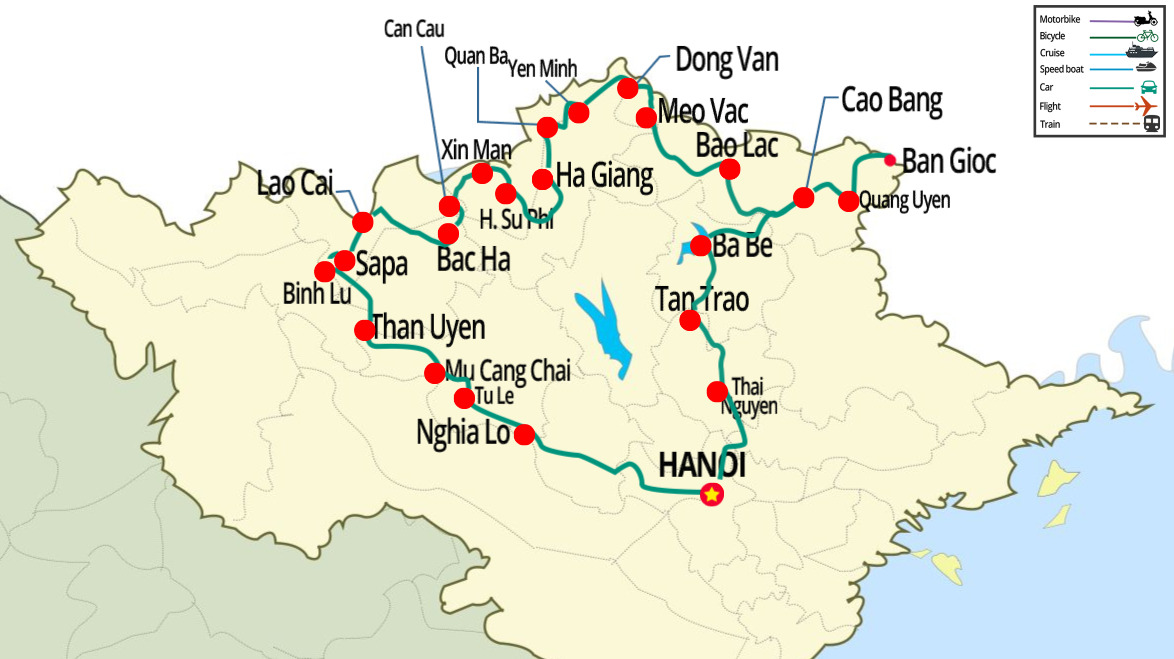
Day 1: Hanoi - Nghia Lo
Day 2: Nghia Lo - Tu Le - Mu Cang Chai
Optional: Possibility of adding a day's hiking to Mu Cang Chai to admire the spectacular rice terraces.
Day 3: Mu Cang Chai - Lai Chau - Sapa
Optional: Possibility of adding 1 to 3 days for those who enjoy trekking.
Day 4: Sapa - Bac Ha
Optional: Possibility of adding a day's trekking to Bắc Hà.
Day 5: Bac Ha - Xin Man - Hoang Su Phi - Ha Giang
Optional: Depending on your wish, adding a few days' trekking in Hoang Su Phi and a day in Ha Giang (in the villages at the foot of the Tay Con Linh range).
Day 6: Ha Giang - Quan Ba - Yen Minh - Dong Van
Optional: Possibility of adding a day's hiking in Dong Van)
Day 7: Dong Van - Meo Vac - Bao Lac
Day 8: Bao Lac - Cao Bang
Day 9: Cao Bang - Ban Gioc - Nguom Ngao - Cao Bang
Optional: Possibility of adding a day's hiking in Cao Bang
Day 10: Cao Bang - Ba Be Lake
Day 11: Ba Be - Hanoi
Central Vietnam
The Central region of Vietnam is home to three UNESCO World Heritage cultural sites: the Hue Citadel, the My Son Sanctuary, and the exceptional natural wonder Phong Nha-Ke Bang National Park. This region offers a unique combination of cultural richness and natural beauty, making it ideal for a voyage of discovery.
Hue
(Recommended duration: 1 – 2 days)
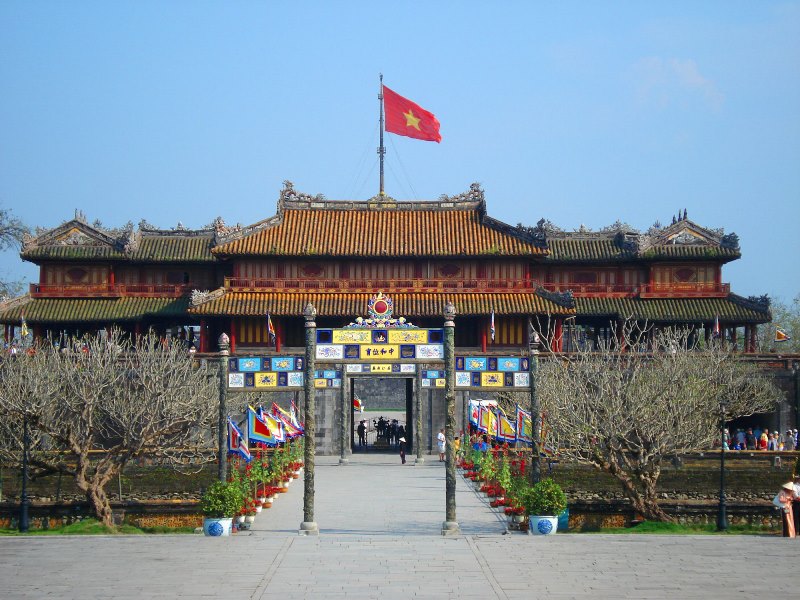
Hue, an imperial city steeped in history and a captivating tourist destination, is where you can find the best-preserved royal heritage in Vietnam. This remarkable city serves as a living museum, embodying an extensive collection of historical artifacts from Vietnam's last feudal dynasty. Immerse yourself in the vibrant tapestry of Vietnamese culture and lifestyle as you explore Hue's cultural treasures. Furthermore, the region boasts a tranquil ambiance and poetic landscapes, which offer travelers a peaceful and idyllic experience.
What to see and do in Hue
- Visit Hue Imperial City, a UNESCO Heritage Site. Explore the palaces, temples, and royal gardens.
- Embark on a boat trip on the Perfume River and visit Thien Mu Pagoda.
- Visit the mausoleums of Emperor Minh Mang, Emperor Tu Duc, and Emperor Khai Dinh.
- Dinner in a local restaurant to savor Hue Royal Cuisine.
- Take a tour of the traditional villages around Hue
- Browse local markets to discover handicrafts and culinary specialties.
>> Read more: 10 things to do in Hue
Hoi An
(Recommended duration: 3-4 days or maybe longer)
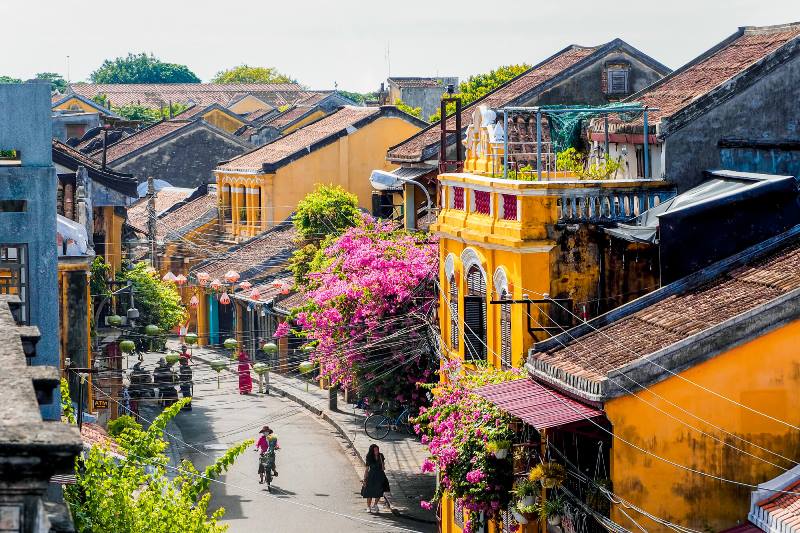
Hoi An is unquestionably the city that receives the most love from tourists coming to Vietnam and is an unmissable destination on a trip to this country. A charming old town frozen in time, Hoi An is renowned for its impeccably preserved cultural features, its vibrant streets lit up by thousands of lanterns of all shapes and colors, as well as its bustling local markets. Awe-inspiring visitors with its lively streets adorned with colorful ancient houses, Hoi An is a captivating destination that showcases a fusion of architectural styles influenced by Chinese, French, and Japanese cultures. The city is dotted with remarkable monuments, well-preserved temples, and pagodas, each reflecting a unique facet of its rich history. There is no shortage of attractions in and around this welcoming ancient town, with its authentic countryside, craft villages, and pretty beaches. Moreover, Hoi An's diverse cuisine adds to the charm, offering a delightful palette of flavors and dishes to tantalize travelers' taste buds.
What to see and do in Hoi An
- Wander through Hoi An ancient town, visiting ancient houses, pagodas, and Chinese congregation halls.
- Shop in local boutiques and discover traditional handicrafts.
- Taste the local cuisine.
Other activities to try in Hoi An
- Cycle around the surrounding countryside to visit villages and rice paddies.
- Relax on Cua Dai or An Bang beach
- Ride a bicycle to visit artisan villages such as Thanh Ha pottery village, Kim Bong carpentry village, Cam Thanh fishing village, Tra Nhieu…
- Have a measuring session for tailor-made traditional Vietnamese garments.
>> Read more: Hoi An of Vietnam: Top 10 things to do in Hoi An
My Son
(Recommended duration: 1 day)
Located 50 kilometers from Hoi An, nestling in a green valley, the My Son archaeological site is a must-see during your stay in Central Vietnam. Recognized by UNESCO as a World Heritage Site, this sanctuary was the religious and political capital of the Champa kingdom, with its Cham temples whose spiritual roots are linked to Hinduism. After a quick half-day visit to My Son Sanctuary, you return to Hoi An and Da Nang for the next schedule.
Da Nang
(Recommended duration: 1-2 days)
Situated between Hue and Hoi An, Da Nang is a lively, modern seaside city in Central Vietnam, famous for its long, spectacular white sandy beaches. If your time allows, consider spending 1 or 2 days in Da Nang to explore the wonders of this vibrant city, such as Ba Na Hill, the Son Tra peninsula, and My Khe beach.
Phong Nha- Ke Bang
(Recommended duration: 1-3 days)
Set in central Vietnam, 200 kilometers north of Hue, Phong Nha Ke Bang National Park is a must-see destination for nature lovers and adventure seekers in Vietnam. Get ready to be amazed by the verdant discovery of mountains, caves, and rivers.
Things to see and do in Phong Nha- Ke Bang
- Explore the world-famous Phong Nha and Thien Duong Caves
- Hike in the National Park
- Take part in kayak or boat excursions
- Ride zipline across the Chay River and Toi Cave
Sample itinerary for Central Vietnam

Day 1: Hanoi - overnight train to Dong Hoi.
Day 2: Dong Hoi - Phong Nha - Thien Duong Cave (one extra day in Phong Nha can be added according to preference).
Day 3: Phong Nha - Vinh Moc - Hue.
Day 4: Hue - city tour.
Day 5: Hue - Da Nang - Hoi An.
Day 6: Hoi An - discovery.
Day 7: Hoi An - My Son - Hoi An (possibility of adding a few extra days in Hoi An for a seaside stay).
Day 8: Hoi An - Da Nang - flight to He Chi Minh- City or Hanoi.
Central Highlands
(Recommended duration: 3-4 days)
Nestled in the heart of Vietnam, the Central Highlands are a land of authenticity and natural wonders. Characterized by their exceptionally fertile basaltic red soils, these plateaus are world-renowned for coffee and rubber cultivation, with vast green plantations stretching as far as the eye can see. The region also boasts a priceless cultural heritage, as it is the cradle of numerous ethnic groups such as the Jarai, Ede and Bahnar, offering a unique immersion in their ancestral traditions and ways of life.
Things to see and do in the Central Highlands
- Visit ethnic minority villages.
- Take part in elephant care.
- Enjoy a sip of coffee at one of Vietnam's famous coffee plantations.
- Explore the Dak Lak Museum of Ethnology to learn about the culture of the region's ethnic minorities.
- Visit the Buon Me Thuot waterfalls.
- Hike through the forest.
Southern Vietnam
Experience the beauty and diversity of Southern Vietnam, a region steeped in history, culture, and stunning landscapes. From the bustling metropolis of Ho Chi Minh City to the tranquil Mekong Delta with its charming floating markets, this region offers a perfect blend of modernity and tradition. Relax on the pristine beaches of Phú Quốc and Nha Trang, or immerse yourself in the lush nature and vibrant city life that Southern Vietnam has to offer. Indulge in a truly immersive and unforgettable experience in this captivating region.
Ho Chi Minh City
(Recommended duration: 1-2 days)
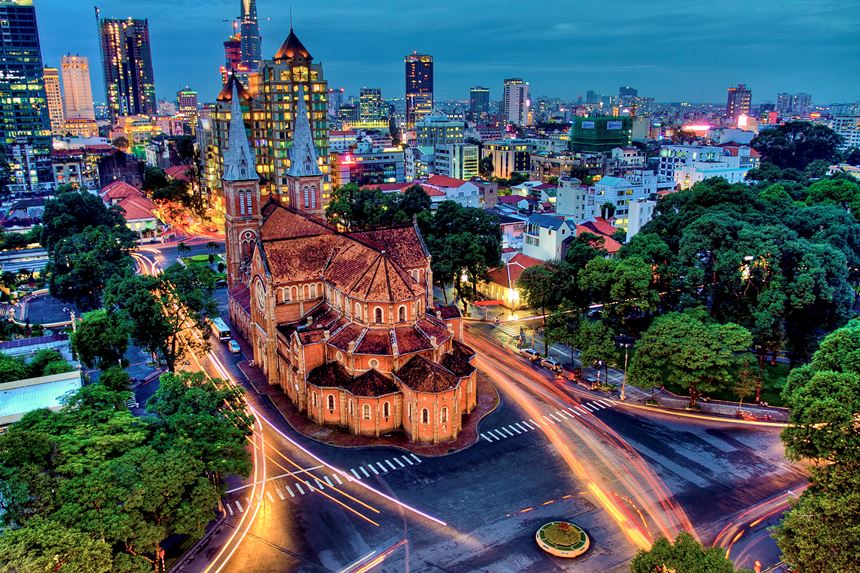
The most important city in Vietnam in terms of economy and demography, 300-year-old Ho Chi Minh City (formerly Saigon) is well-known for skyscrapers, rooftop vistas, and urban attractions. Being a dynamic metropolis, however, if you wish to learn about history, culture, and the bustling, vibrant daily life of Saigonese, this city, once renowned as the pearl of the Far East, has a lot to offer.
Things to see and do in Ho Chi Minh City
- Explore the historical sites of the city, including the Jade Emperor Pagoda, Ho Chi Minh City Hall, Notre-Dame de Saigon Cathedral, Saigon Central Post Office, and Reunification Palace.
- Visit Chinatown and its large market
- The FITO Museum of Traditional Vietnamese Medicine
- Stroll on Nguyen Hue pedestrian street.
- Learn more about the Vietnam War at the War Remnants Museum and the Cu Chi Tunnels.
- Discover the Ben Thanh market
- Savor the most delicious regional cuisine at the eye-catching eateries and food carts.
>> Read more: Top 10 what to do in Saigon - Ho Chi Minh city
Mekong Delta
(Recommended duration: 2 – 3 days)
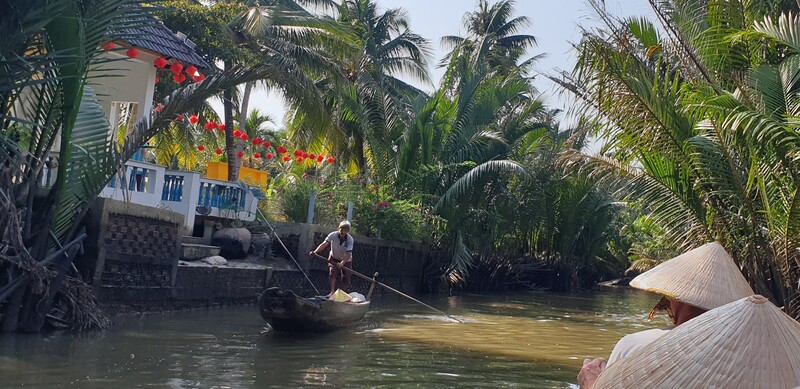
The Mekong Delta, a natural treasure trove in southern Vietnam, extends over a vast region where the waters of the Mekong branch out into a dense network of canals and rivers. An exploration of this captivating region, ideally planned over 3 days, allows a complete immersion in its verdant landscape and lively aquatic life. Start your journey from Ho Chi Minh City and head to Ben Tre, renowned for its lush orchards and traditional villages. Continue to Long Xuyen to discover its bustling floating markets and vibrant river cultures. At Chau Doc, explore its colorful temples and unique cultural mix before crossing the border to discover the charms of neighboring Cambodia. Each stop on this itinerary promises an authentic encounter with everyday Mekong life, offering enriching experiences that celebrate both the abundant nature and vibrant culture of this iconic region.
What to see and do in the Mekong Delta:
- Explore the charming waterways of the Mekong by taking a boat trip.
- Immerse yourself in the vibrant atmosphere of a floating market.
- Experience the distinctive lifestyle of the local people.
- Venture into a National Park and see over 100 diverse bird species.
- Ride a bicycle through picturesque rice fields and traditional villages.
- Stroll through lush orchards and taste tropical fruits.
>> Read more: Top 10 unmissable activities in the Mekong Delta
Find out some sample itineraries to explore this region
Option 1: 5-day tour of Ho Chi Minh City and the Mekong Delta
Day 1: Arrival in Ho Chi Minh City
Day 2: Visit Ho Chi Minh City
Day 3: Ho Chi Minh City - Ben Tre
Day 4: Ben Tre - Sa Dec - Long Xuyen
Day 5: Long Xuyen - Visit the floating market - Return to Ho Chi Minh City
Option 2: 6-day tour of Ho Chi Minh City and the Mekong Delta
Day 1: Arrival in Ho Chi Minh City
Day 2: Visit Ho Chi Minh City
Day 3: Ho Chi Minh City - Ben Tre
>> Read more: Tour to the Mekong Delta: itinerary ideas in 1,2,3,4,5,6 days
The most stunning beaches in Vietnam
Vietnam boasts a vast coastline of over 3000 km, showcasing a plethora of stunning beaches and islands. From north to south, travelers have around twenty enchanting destinations to select from for a truly serene coastal retreat.
Southern Vietnam, sunny all year round, is ideal for a seaside getaway for couples or families.
>> Read more: Top 10 dream beaches in Vietnam
Phu Quoc Island
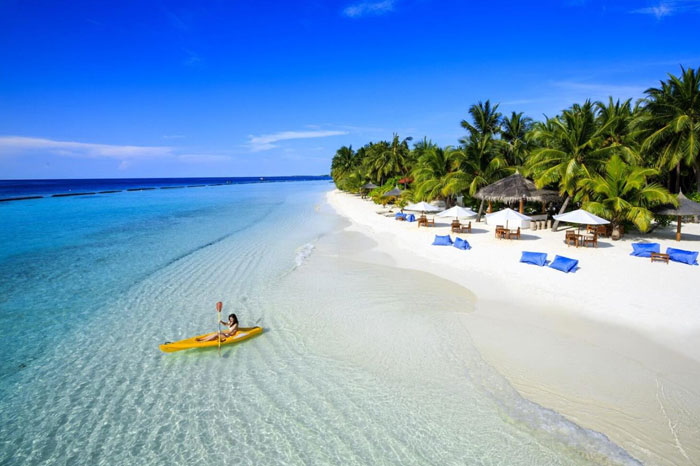
Just an hour's flight from Ho Chi Minh City, Phu Quoc Island is a perfect destination for a beach getaway in Vietnam thanks to its pleasant climate, staggering beaches, and abundant natural beauty. The best time to visit the heavenly beaches of Phu Quoc is generally from November to April, which coincides with the dry season of the region. During these months, Phu Quoc benefits from a dry, sunny climate, with pleasant temperatures ranging from 25°C to 32°C. These conditions are perfect for taking full advantage of the white, sandy beaches and crystal-clear waters that line the island.
From November to April, the waters are calm, which is ideal for swimming, scuba diving, and other water sports. Beaches such as Long Beach, Bai Sao, Bai Truong, and Ong Lang offer spectacular backdrops for relaxing in the sun, strolling along the coastline, or exploring the nearby coral reefs.
The period from February to April is especially recommended for those seeking sunny days with little rain. On the other hand, the rainy season, spanning from May to October, brings frequent showers and choppier waves, which impose certain limitations on aquatic activities. For the ultimate Phú Quốc beach experience, planning your visit during the dry season will maximize your chances of fully enjoying the natural beauty and tranquility of this dream destination.
>> Read more: Top 5 enchanting beaches in Phu Quoc
Con Dao Island
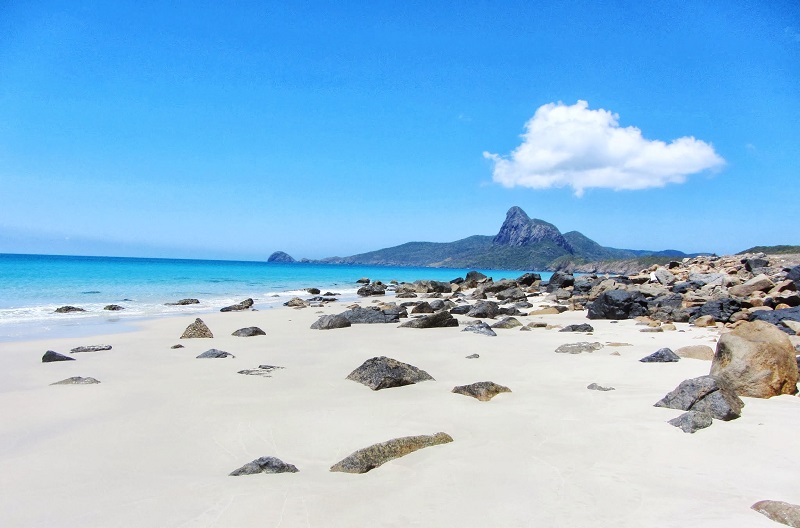
Only an hour's flight from Ho Chi Minh City, Con Dao boasts some of the most stunning beaches on the planet. Recognized as one of the top 10 most enchanting islands globally by the esteemed travel publication Lonely Planet, Con Dao has also been acclaimed as one of the most enigmatic destinations on Earth by Travel and Leisure magazine.
With a mild climate favorable to a wide range of year-round activities, Con Dao Island is an exceptional destination for seaside vacations.
Owing to the stable climate and pleasant temperatures, Con Dao can be visited all year round. There are two seasons on this island: the dry season, spanning from October to the end of February; and the rainy season, which starts in March and ends in September.
Please note that in the rainy season, showers are frequent at the end of the day. The sea is calm, and turtles come to lay eggs from June to August. Swimming, diving, fishing, and cruising are recommended.
In the dry season, the sun is bright, but the sea is rougher due to the wind. So, think also about taking a bike ride or hiking through pristine forests.
Mui Ne-Phan Thiet
Mui Ne is famous for its spectacular dunes and ideal conditions for kitesurfing and windsurfing. The best time to visit Mui Ne is from November to April. During these months, the region enjoys a dry, sunny climate with pleasant temperatures ranging from 24°C to 32°C, making it a favorite destination for beach getaways and water sports. December marks the start of the dry season in Mui Ne, bringing bright days and relatively little precipitation. This is the perfect time to enjoy the white-sand beaches, explore the red dunes, or take up activities like windsurfing and kitesurfing.
February and March are also particularly appreciated by kitesurfing enthusiasts owing to the strong, constant winds that sweep through the region.
Nha Trang
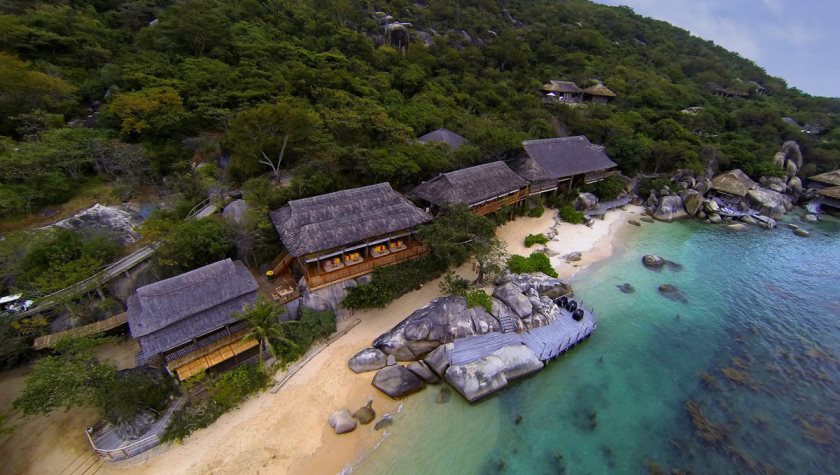
The glistening expanse of smooth, ivory sand that gracefully stretches alongside the sparkling azure waters serves as an emblem of the enchanting Nha Trang City. Blessed with a delightful climate and a constant embrace of warm sunshine throughout the year, it is no wonder that this captivating destination allures both local and international tourists at any given time. However, the best period to visit Nha Trang is from January to September, particularly during the splendid months of April to August. For those who yearn for a serene retreat, there are a plethora of havens awaiting exploration. In addition to Tran Phu beach in the city center, Nha Trang boasts numerous other stunning beaches, namely Bai Dai, Bai Duong - Hon Chong, Doc Let, Dai Lanh, Hon Ong, Hon Gam, Binh Ba, Ninh Van, Hon Tre...
From January to March, Nha Trang is blessed with pleasant temperatures ranging from 22°C to 30°C, which is perfect for relaxing on the beach, scuba diving in the colorful coral reefs, or exploring nearby islands such as Hon Mun and Hon Tam. The temperatures rise gradually in April and May, yet remain comfortable for outdoor activities.
June, July, and August mark Nha Trang's peak tourist season, when summer temperatures can reach around 34°C. These months are perfect for sun lovers and water sports such as jet skiing, parasailing, and sailing. However, July and August can sometimes be wetter due to the summer monsoon, which brings intermittent showers.
>> Read more: Top 10 things to do in Nha Trang
Quy Nhon
It's no exaggeration to say that Quy Nhon is Vietnam's forgotten paradise. The miles of sand, the crystal-clear turquoise sea, and the lush green mountains make Quy Nhon the perfect spot for your seaside holiday.
Best season to visit: From early January to late September.
My Khe beach (Da Nang)
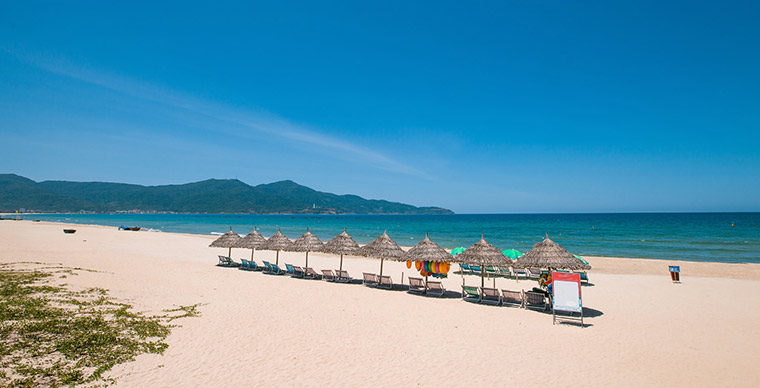
Da Nang is a popular tourist destination in Vietnam known for its beautiful beaches, with My Khe Beach being recognized as one of the world's most stunning beaches by Forbes magazine. Visitors can enjoy the fine white sands, calm waves, and mesmerizing blue waters throughout the year. However, that is not all that Da Nang has to offer. This city is a popular destination for water sports aficionados, offering activities like surfing, snorkeling, and jet skiing. Other notable beaches in the area include Non-Nuoc, Pham Van Dong, Nam O, and Tien Sa Beach.
>> Read more: What to do on My Khe beach, a golden treasure of Da Nang
Hoi An
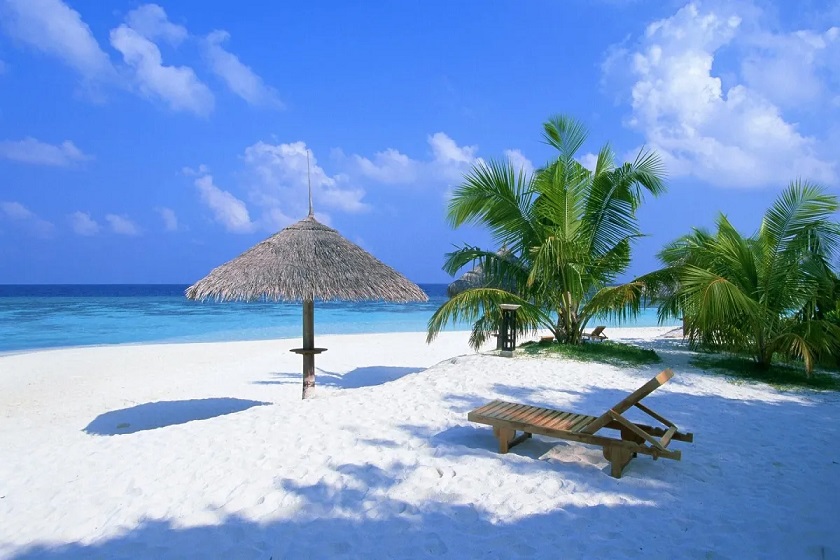
When the name Hoi An is spoken, our minds are transported to the enchanting ancient district, the Cau Pagoda, and the scenic Hoai River. Yet, few are privy to the hidden gems that lie just a stone's throw away from the city center—the breathtaking and secluded beaches that are sure to captivate any visitor.
Cua Dai Beach
Situated at the junction of three rivers—Thu Bon, Truong Giang, and De Vong—and just 5km from the city, Cua Dai Beach is the most well-known beach in Hoi An. Get ready for hours of idleness on a long stretch of fine white sand surrounded by coconut palms.
Ha My Beach
Situated on the coastal road linking the city of Da Nang and the ancient town of Hoi An, Ha My Beach is a recent favourite amongst Vietnamese and international travellers alike. This "sleeping fairy" was named one of the 16 most beautiful beaches in Asia by the Daily Telegraph.
An Bang Beach
Set in the Cam An district, just 7km from the ancient town, An Bang Beach offers a quieter place to stay than Cua Dai. With clear water and a long stretch of white sand, An Bang is sure to appeal to sea lovers.
The most ideal period to embark on a seaside escapade in Hoi An is undoubtedly between the months of April and September, when the weather is pleasantly warm and the serene sea embraces tranquility. It is during this season that one can relish the sheer splendor of Hoi An's exquisite beaches, basking in the glorious sunshine.
Itineraries for Vietnam Tours
We'd like to suggest several itineraries to discover the three main regions of Vietnam, tailored to your time and preferences.
Itinerary for a 14-day tour in Vietnam
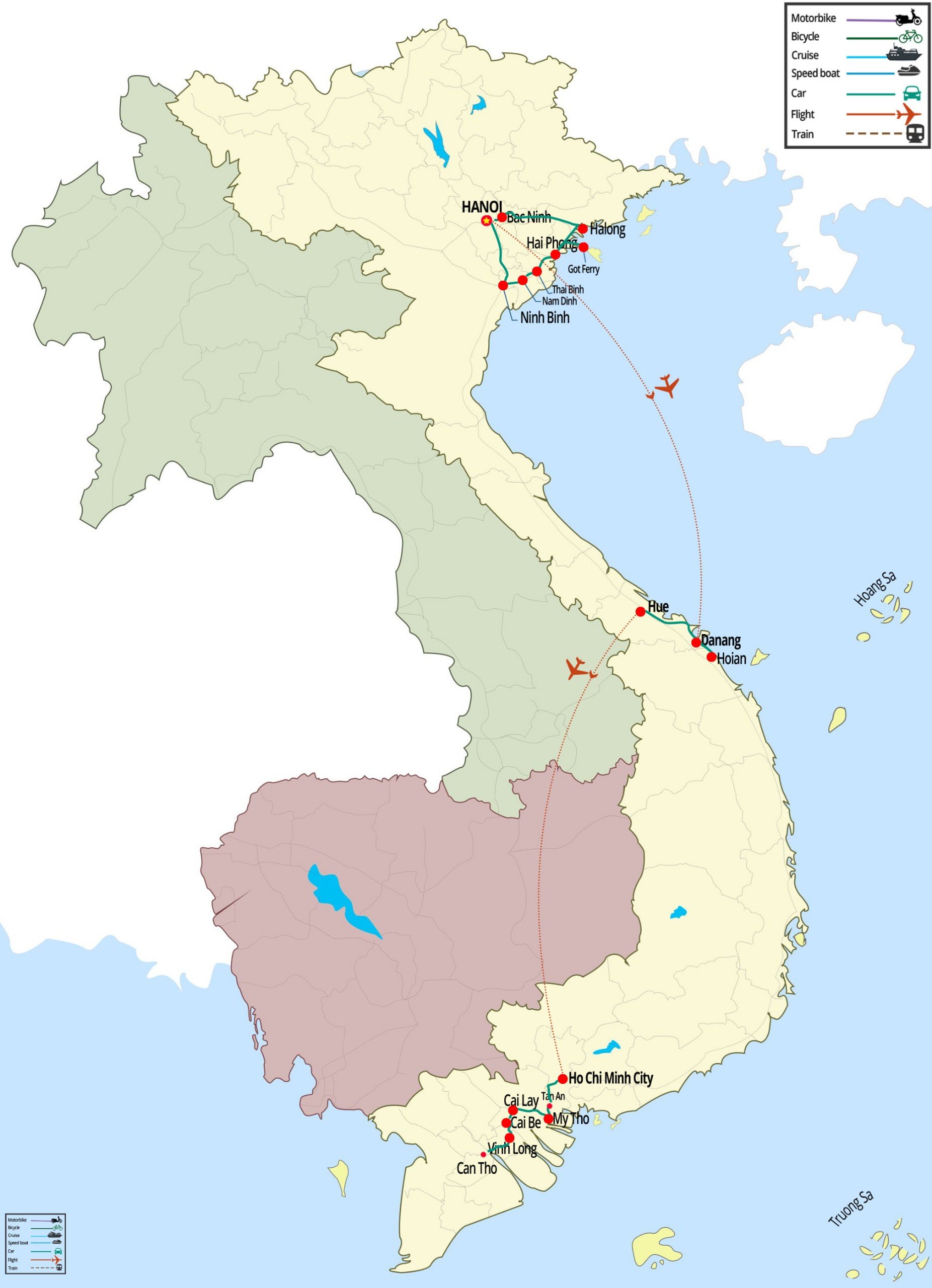
Itinerary summary:
Day 1: Hanoi : welcome to Hanoi
Day 2: Hanoi : Hanoi city tour
Day 3: Hanoi - Ninh Binh
Day 4: Ninh Binh - Lan Ha Bay
Day 5: Lan Ha Bay - Hanoi - Danang - Hoian: Transfer back to Hanoi for the Hanoi- Danang flight, then head to Hoi An
Day 6: Hoian : discover rural Hoian by boat trip ; enjoy Teh Dar Hoian show
Day 7: Hoian : free schedule
Day 8: Hoian - Hue
Day 9: Hue - Ho Chi Minh City
Day 10: Ho Chi Minh City : discover city highlights
Day 11: Ho Chi Minh City : special excursion to Cu Chi tunnels ; Vespa Tour Saigon after dark
Day 12: Ho Chi Minh City - Cai Be - Can Tho
Day 13: Can Tho - Ho Chi Minh City
Day 14: Ho Chi Minh City
Itinerary for a 15-day tour in Vietnam
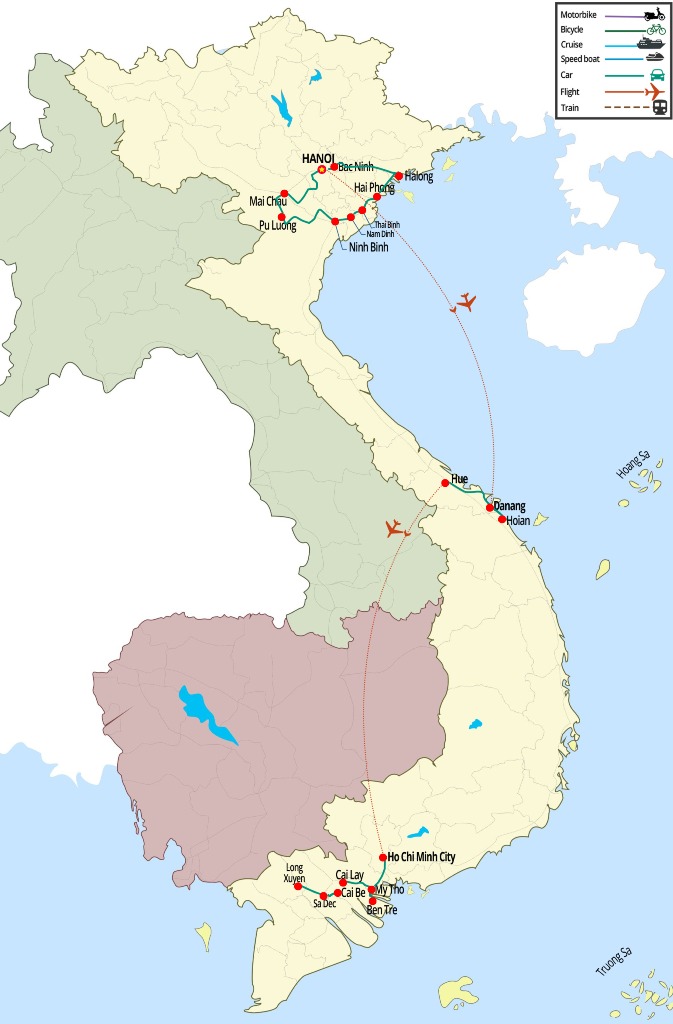
Itinerary summary:
Day 1: Hanoi: Arrival
Day 2: Hanoi: City tour
Day 3: Hanoi - Mai Chau - Mai Hich
Day 4: Mai Hich - Pu Luong
Day 5: Pu Luong - Ninh Binh
Day 6: Ninh Binh - Halong Bay
Day 7: Halong Bay - Hanoi - flight to Da Nang - Hoi An
Day 8: Hoi An: Visit the town
Day 9: Hoi An - Da Nang - Hue
Day 10: Hue - city tour
Day 11: Hue - fly to Ho Chi Minh City
Day 12: Ho Chi Minh City - Ben Tre
Day 13: Ben Tre - Sa Dec - Long Xuyen
Day 14: Long Xuyen - return to Ho Chi Minh City
Day 15: Ho Chi Minh City - departure flight
Extention options (optional):
- 3-5 days of seaside getaway: Add a few extra days to enjoy the beaches or islands of your preference.
- 3-6 days of discovery in the Northeast or Northwest: Explore local cultures and mountainous landscapes.
This itinerary will give you a complete picture of Vietnam, from its breathtaking landscapes to its rich cultural heritage.
Itinerary for a 17-day tour in Vietnam
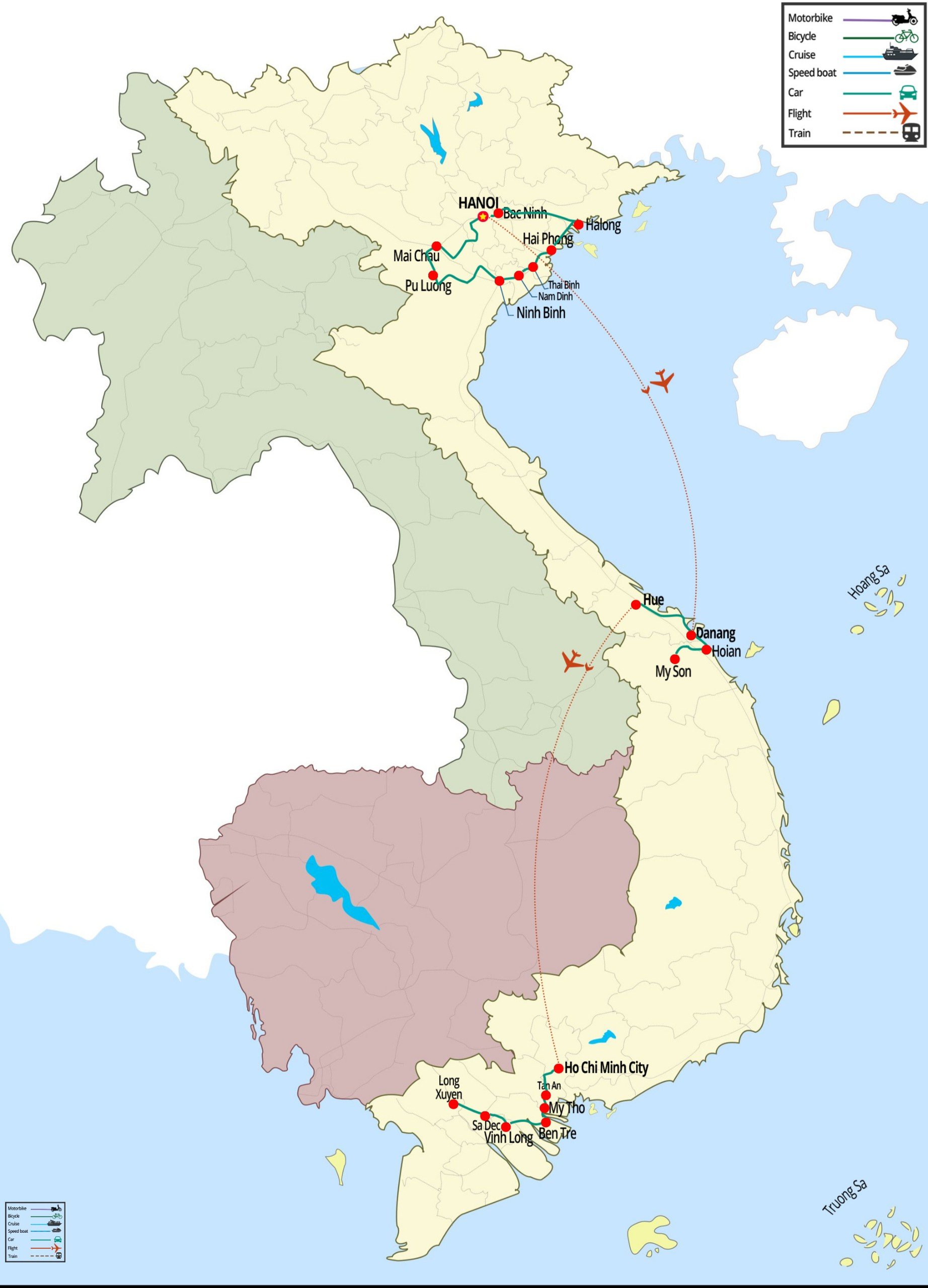
Itinerary summary:
Day 1: Hanoi : Arrival
Day 2: Hanoi : Hanoi city tour
Day 3: Hanoi- Mai Chau
Day 4: Mai Chau - Pu Luong
Day 5: Pu Luong- Ninh Binh
Day 6: Ninh Binh- Hanoi
Day 7: Hanoi- Hai Phong - Lan Ha Bay
Day 8: Lan Ha Bay- Hanoi- Danang- Hoi An: Transfer back to Hanoi for the Hanoi- Danang flight, then head to Hoi An
Day 9: Hoi An
Day 10: Hoi An- My Son- Hoi An
Day 11: Hoi An - Hue
Day 12: Hue - Ho Chi Minh city
Day 13: Ho Chi Minh city
Day 14: Ho Chi Minh City - Ben Tre
Day 15: Ben Tre - Long Xuyen
Day 16: Long Xuyen- Ho Chi Minh City
Day 17: Ho Chi Minh City
Itinerary for a 21-day tour in Vietnam
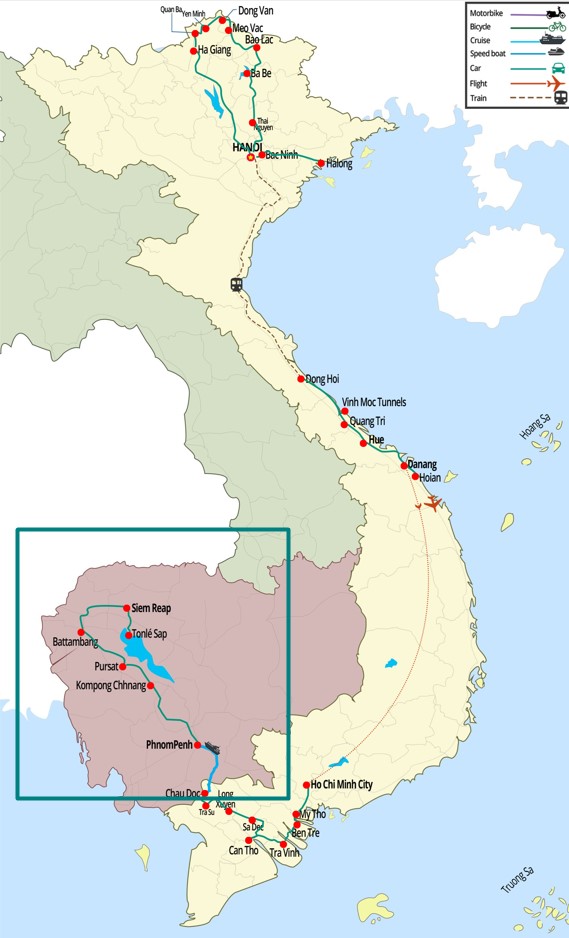
Itinerary summary:
Day 1: Hanoi - arrival
Day 2: Hanoi - city tour
Day 3: Hanoi - Ha Giang
Day 4: Ha Giang - Dong Van
Day 5: Dong Van - Meo Vac - Bao Lac
Day 6: Bao Lac - Ba Be
Day 7: Ba Be - Hanoi
Day 8: Hanoi - Halong Bay
Day 9: Halong - Hanoi - night train to Dong Hoi
Day 10: Dong Hoi - Phong Nha
Day 11: Phong Nha - Vinh Moc - Hue
Day 12: Hue - city tour
Day 13: Hue - Da Nang - Hoi An
Day 14: Hoi An - discover villages
Day 15: Hoi An - free day for relaxation at the beach
Day 16: Hoi An - Da Nang - flight to Ho Chi Minh City - city tour
Day 17: Ho Chi Minh City - Ben Tre - Tra Vinh
Day 18: Tra Vinh - Sa Dec - Long Xuyen
Day 19: Long Xuyen - Tra Su - Chau Doc
Day 20: Chau Doc - Return to Ho Chi Minh City
Day 21: Ho Chi Minh City - Departure flight
Cambodia Extension
If your time permits, why not opt for a Vietnam-Cambodia trip? After visiting the Mekong Delta, you can easily catch a speedboat to Phnom Penh. Enjoy a 4-6 day extension to discover the Khmer capital's must-see sites, as well as the fabulous Angkor temples in Siem Reap, a UNESCO World Heritage site.
See here an example of an extension to Cambodia (continues on option 2):
Day 20: Take a speedboat to Phnom Penh instead of returning to Ho Chi Minh City
Day 21: Visit the city of Phnom Penh.
Day 22: Phnom Penh - Battambang.
Day 23: Battambang - Siem Reap.
Day 24: Siem Reap: Full-day city tour of Angkor Thom, Bayon, Baphuon, Angkor Wat.
Day 25: Siem Reap - Continuation of the visit to Preah Khan, Neak Pean, Mebon Oriental, Pre Rup, Banteay Srei, Taprohm.
Day 26: Siem Reap - Departure flight.
This captivating Vietnam-Cambodia will reveal all the magic of these two countries, and promise to be an unforgettable trip!
Exemple of 22-day Vietnam itinerary
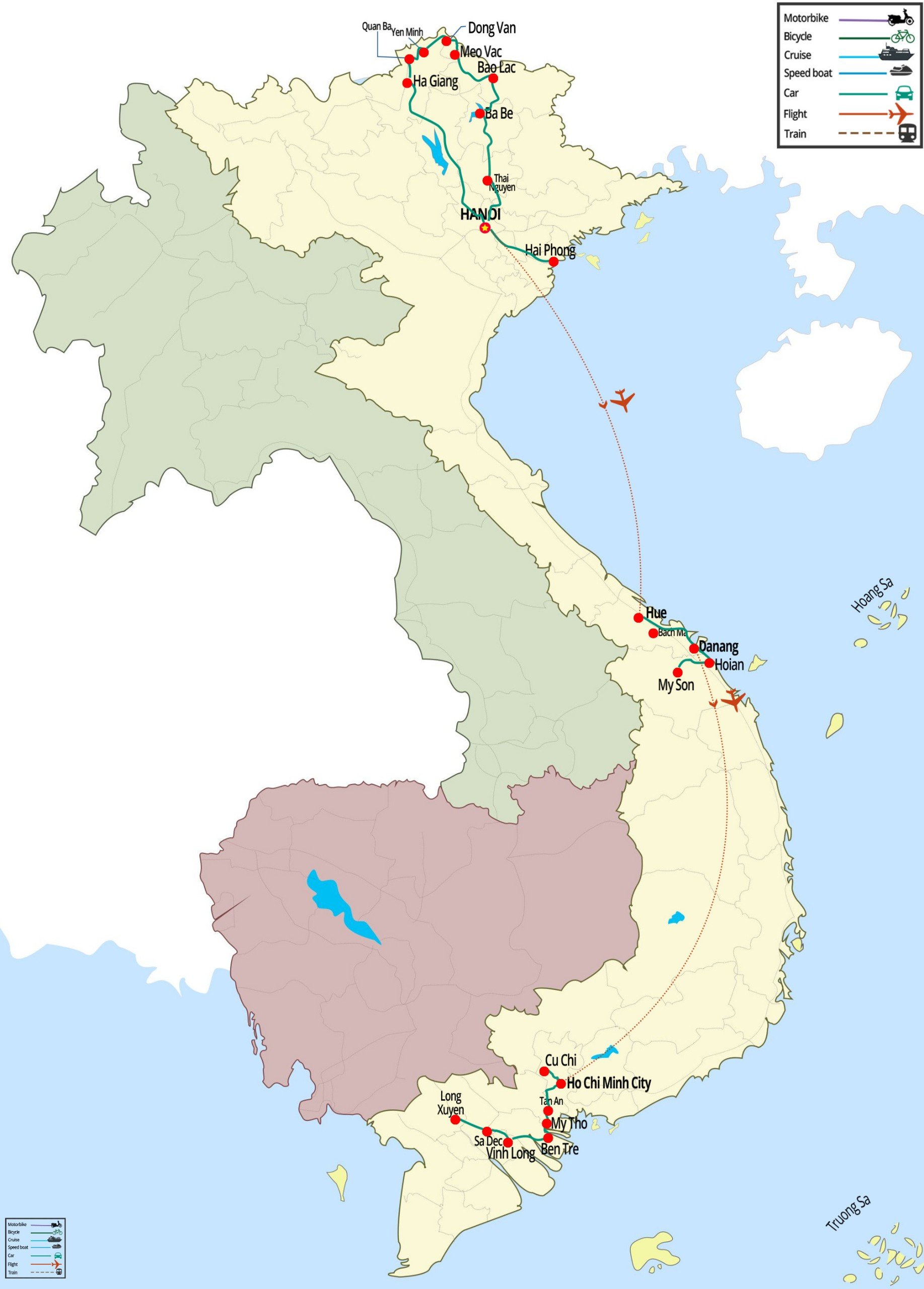
Itinerary summary:
Day 1: Hanoi: Arrival
Day 2: Hanoi: Hanoi city tour
Day 3: Hanoi- Ha Giang
Day 4: Ha Giang
Day 5: Ha Giang- Dong Van
Day 6: Dong Van
Day 7: Dong Van - Bao Lac
Day 8: Bao Lac- Ba Be
Day 9: Ba Be
Day 10: Ba Be- Hanoi
Day 11: Hanoi- Lan Ha Bay
Day 12: Lan Ha Bay- Hanoi- Hue: Transfer back to Hanoi for the Hanoi-Hue flight
Day 13: Hue
Day 14: Hue - Hoi An
Day 15: Hoi An
Day 16: Hoi An- My Son- Ho Chi Minh City
Day 17: Ho Chi Minh city
Day 18: Ho Chi Minh city- Tay Ninh- Ho Chi Minh city
Day 19: Ho Chi Minh City- Ben Tre
Day 20: Ben Tre- Long Xuyen
Day 21: Long Xuyen- Ho Chi Minh City
Day 22: Ho Chi Minh City
FAQs
Question: Why North to South?
Answer: Deciding whether to start a tour of Vietnam in the North or the South is very important. For a complete and enriching immersion, Hanoi is often chosen as the first stop for a tour in Vietnam. Rich in history and culture, the capital is the political and cultural center of the country. Starting in Hanoi immerses you immediately in Vietnamese history and culture, providing a solid foundation for the rest of the country.
Question: What are the must-visit attractions in Vietnam?
Answer: Vietnam abounds with a variety of captivating tourist sites. Among the must-sees is Ha Long Bay, famous for its spectacular karst formations and picturesque cruises. Hoi An, with its well-preserved historic center and colorful lanterns, is a UNESCO World Heritage site not to be missed. Hue, the former imperial capital, features royal palaces and imperial tombs. Saigon (Ho Chi Minh City), the vibrant economic center of the South, seduces with its dynamism and historic monuments such as the Central Post Office and Notre-Dame Cathedral.
Question: What are the best periods to visit Vietnam?
Answer: Vietnam is generally pleasant to visit all year round, though climatic conditions vary from region to region. For the North (Hanoi, Ha Long Bay), the months of October to April are recommended for mild temperatures and little rain. For the Center (Hue, Hoi An), the months from February to August offer ideal conditions with dry, sunny weather. For the South (Ho Chi Minh City, Mekong Delta), the period from November to April is the most favorable, avoiding the summer monsoon.
Question: What are the recommended cultural activities in Vietnam?
Answer: Vietnam offers an impressive array of cultural riches to discover. Be sure to attend a traditional water puppet show in Hanoi or explore the ancient Buddhist temples in Huế. In Hoi An, take part in a Vietnamese cooking class to learn the secrets of local dishes. For a unique experience, visit the floating markets of the Mekong Delta or explore the lives of ethnic minorities in the Central Highlands.
Question: What are the best ecotourism activities in Vietnam?
Answer: Vietnam offers many opportunities for ecotourism enthusiasts. A trip to Phong Nha-Kẻ Bàng National Park is a must, with its spectacular caves and unique biodiversity. Enjoy trekking in the northern mountains to discover tribal cultures and mountain landscapes. Discover nature reserves by boat to observe wildlife and aquatic ecosystems.
Question: What traditional festivals are worth visiting in Vietnam?
Answer: Vietnam celebrates many traditional festivals throughout the year. Attend the Hue festival, where royal processions and cultural performances recall former imperial grandeur. Discover the Hoi An festival, illuminated by thousands of lanterns during the full moon, offering a magical atmosphere. Explore the Mid-Autumn Festival, featuring lantern parades and folk dances.
Question: What are the must-try dishes in Vietnam?
Answer: Vietnamese cuisine is renowned for its freshness and unique flavors. Try phở in Hanoi for a comforting noodle soup, or enjoy Cao lầu in Hoi An, prepared with special noodles and fresh herbs. Taste crispy bánh xèo in Saigon or fresh seafood in Phu Quoc. Don’t forget to go to some local markets to discover more authentic Vietnamese tastes.
Question: What are the best ways to experience the daily life of Vietnamese?
Answer: For a genuine insight into everyday Vietnamese life, you can explore local markets throughout Vietnam. It is also recommended to visit craft villages near Hanoi, Hue, and Hoi An to see artisans at work. Taking a bike ride through the countryside around Mai Chau, Ninh Binh, Hue to admire verdant rice fields and traditional villages is also a great way to explore the authentic daily life of the locals.
Question: What are the best activities for history and architecture enthusiasts in Vietnam?
Answer: Vietnam is sure to amaze all history and architecture buffs. While in Hanoi, don’t miss the Thang Long Citadel and numerous French colonial buildings in the French Quarter. While in Hue, the Imperial City with its magnificent royal architecture, and the royal tombs are definitely not to be missed. In Ho Chi Minh City, don’t forget to see some French colonial architecture like the Central Post Office and Notre Dame Cathedral.
Question: What are the best destinations for rural tourism and discovering ethnic minorities in Vietnam?
Answer: For an immersive experience in rural tourism and the discovery of ethnic minorities, discover the northern mountain region where you'll find ethnic villages. Spending the night with the inhabitant in their home is the best way to discover their unique culture.
We hope this article is useful for you in planning your trip to Vietnam. If you need any advice or have any questions relating to your Vietnam itinerary, don't hesitate to contact our team via this email address: sales@authentiktravel.com or WhatsApp: +84 (0) 96 9 72 99 83. We will be happy to work with you to design a plan that meets your expectations. Or, you can simply CLICK HERE to create your own tailor-made Vietnam Tour, and our team will get back to you as soon as possible.
Related articles:
>> Best Time to Visit Vietnam: A detailed weather guide
>> 15-day Vietnam Tour: Travel itineraries for all types of travelers
>> 10 Days in Vietnam: List of Itineraries for Every Traveler
>> 3 Weeks in Vietnam: List of the Best 21-Day Travel Itineraries
 Español
Español Français
Français
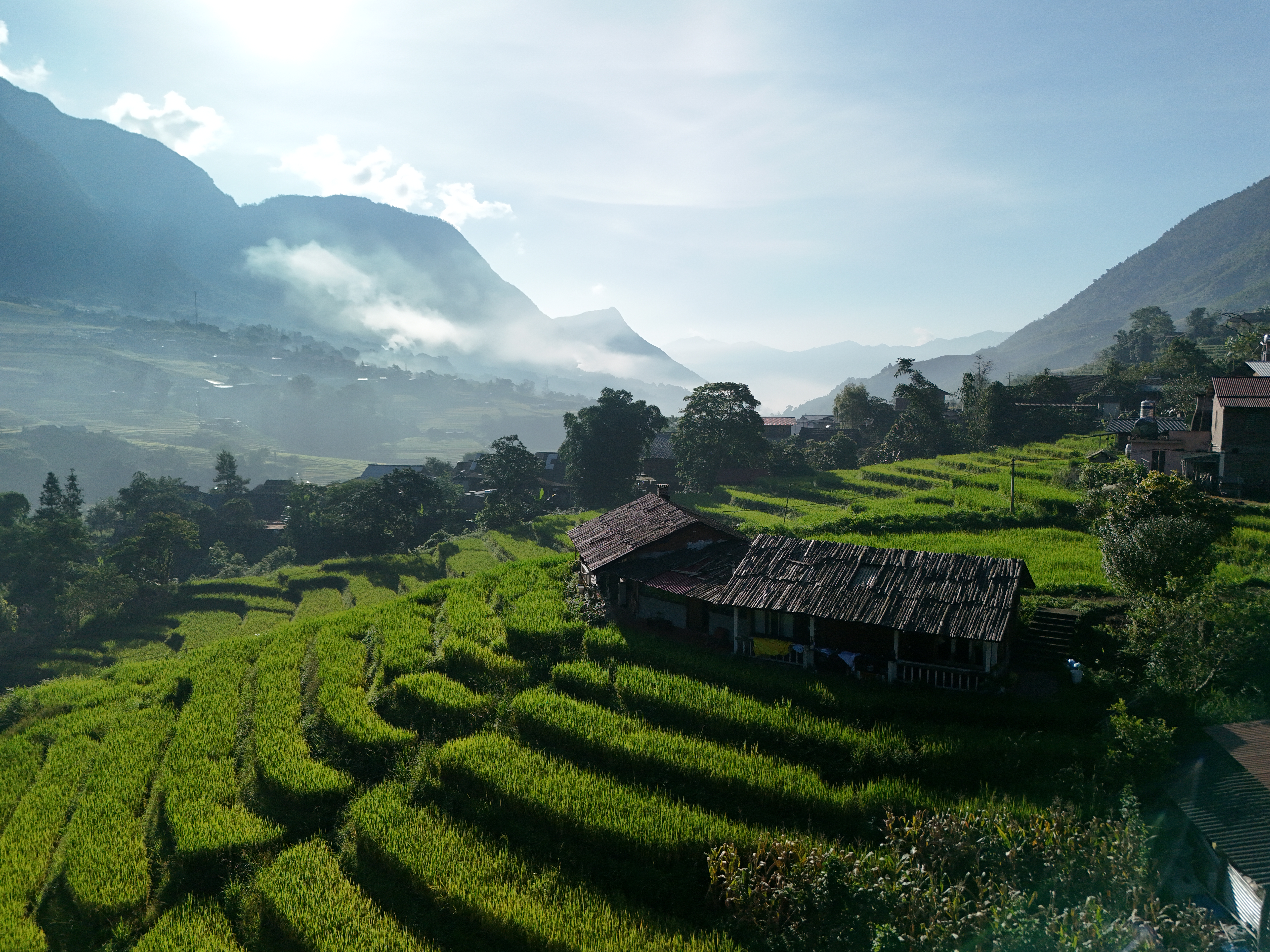






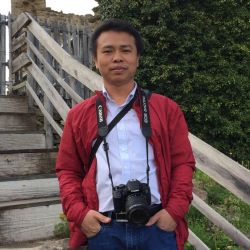

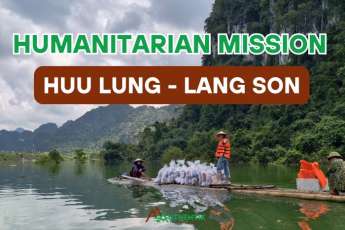
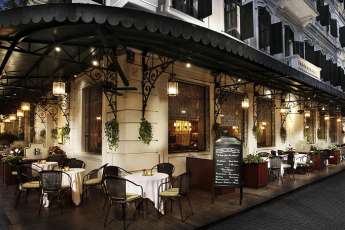
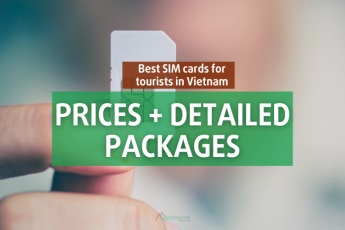
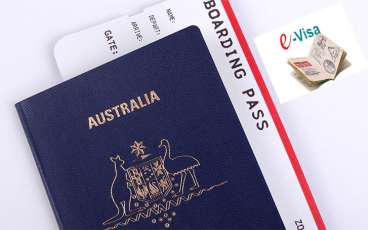
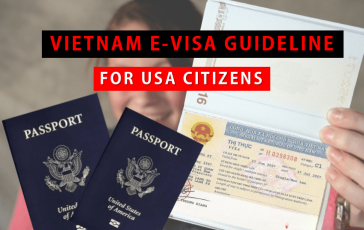
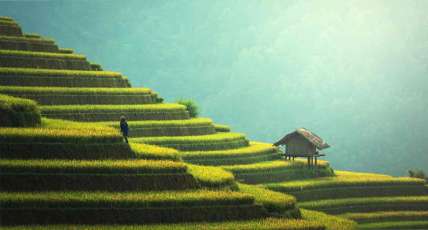







Morgane Ter Cock
on Dec 18, 2025HerbertPhomaMS
on Oct 19, 2025Lilyan Cuttler
on Oct 15, 2025Avenue17XC
on Sep 14, 2025Avenue18JL
on Jul 21, 2025